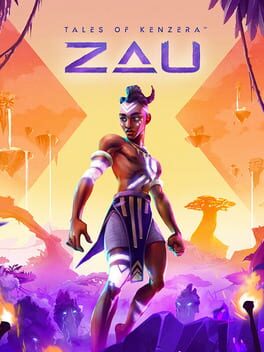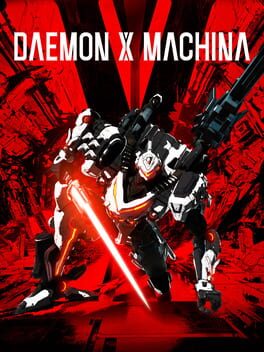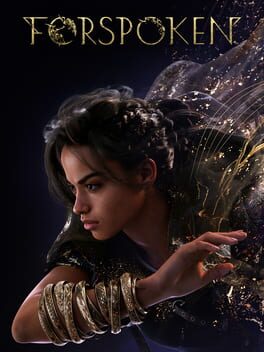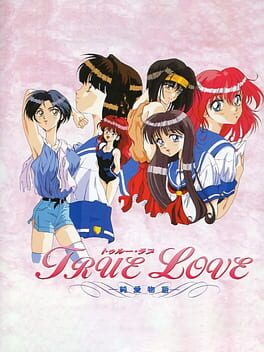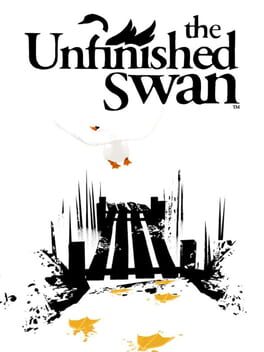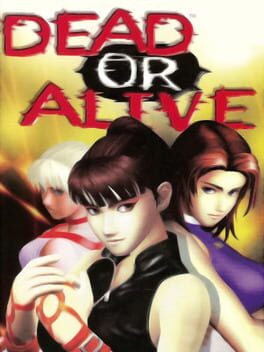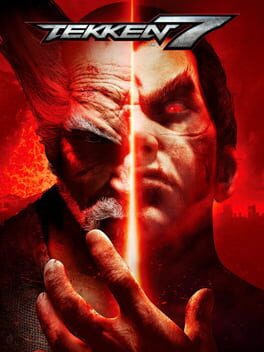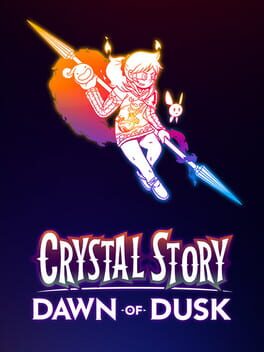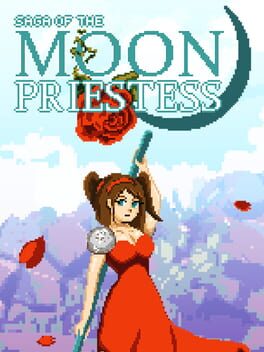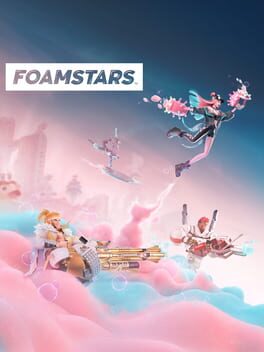tradegood
The story has a lot of heart and the setting, music, and 3D environments are wonderful. The character of ZAU is well thought out and the new abilities to traverse the map feel like meaningful upgrades. Having two very distinct fighting styles – a melee and a ranged option you can flip back and forth between – feels great. However, it does fall a little short as a metroidvania, being very linear, the levels don’t reward backtracking , and there’s not much of a point completing the challenges to get passive runes, unless you are just doing it to challenge yourself. The more time you spend in this game, the more you can see where corners are cut and the game feels a little unnecessarily long and repetitive.
You definitely first notice that the enemies don’t have much variety, which did not really bother me, until certain zones where you get locked into long fights with many waves of the same enemies requiring little thought to actually defeat them. There are only about 5 enemy types so once you come up with a strategy for them, you can just do that every time and hope the enemy doesn’t get a lucky hit. The boss fights provided a bit more of a challenge, but some of that challenge was unfortunately being unable to see exactly what is happening on screen due to how many particle effects are flying around.
Another big issue with this game is that it was sometimes unresponsive for me. Pressing buttons didn’t always do what I wanted, the camera would lag behind in a frustrating way, and the detection of something like the arrow swing would sometimes miss entirely. It led to a lot of frustration, particularly in some of the late game challenge sections and chase sequences. I really enjoyed the platforming for about 80% of the game, but I think the polish of the early game abilities is not present for the stuff you do at the end of the game.
The story was well delivered, and though it wasn’t the most unique story, I can appreciate how it was told in a way that reflects the creator’s cultural background. The story had the most thought and clarity in this game, and I think it’s very admirable. I think this team definitely has the ability to keep improving on all aspects and I look forward to seeing what they do next.
You definitely first notice that the enemies don’t have much variety, which did not really bother me, until certain zones where you get locked into long fights with many waves of the same enemies requiring little thought to actually defeat them. There are only about 5 enemy types so once you come up with a strategy for them, you can just do that every time and hope the enemy doesn’t get a lucky hit. The boss fights provided a bit more of a challenge, but some of that challenge was unfortunately being unable to see exactly what is happening on screen due to how many particle effects are flying around.
Another big issue with this game is that it was sometimes unresponsive for me. Pressing buttons didn’t always do what I wanted, the camera would lag behind in a frustrating way, and the detection of something like the arrow swing would sometimes miss entirely. It led to a lot of frustration, particularly in some of the late game challenge sections and chase sequences. I really enjoyed the platforming for about 80% of the game, but I think the polish of the early game abilities is not present for the stuff you do at the end of the game.
The story was well delivered, and though it wasn’t the most unique story, I can appreciate how it was told in a way that reflects the creator’s cultural background. The story had the most thought and clarity in this game, and I think it’s very admirable. I think this team definitely has the ability to keep improving on all aspects and I look forward to seeing what they do next.
2019
If I was ever going to play a mech game, I'm not playing the one by the Souls team, I'm playing the one by the Harvest Moon team!
Mechs in general don't really do much for me, so I was wary that the game might be unapproachable and overcomplicated, but I think this game strikes a pretty good balance for a “casual+” like me. There's also decent mission and landscape variety, and the early missions are fairly short and forgiving. I think using the trigger buttons was a smart way to design the combat of this game, however playing this in handheld mode or with joycons does not feel great. This game feels like it was designed to be sat in front of a screen with a pro controller or with the game’s custom handheld peripheral… not really designed for the vanilla Switch experience.
While this game is generally adequate all around, it struggles to maintain my interest too much or pull me back in after I set it down. The story doesn't have much intrigue. It introduces a ton of characters, so that you can later unlock them as teammates, but as a result you don't really feel connected to any of them. it’s hard to tell what the actual stakes are, and the enemies are undefined AIs without a clear motivation. There are some named enemies but the game has you destroy them at the end of each mission, so it does not feel personal. The progression is also slow and incremental, I don’t feel much different after an hour or two of playing. Overall it’s somewhat disappointing as a RPGish experience, but I’m ok with it being the type of game I can passively absorb over a long period of time, without needing to focus on. This isn’t a game I feel a need to finish or see everything, I can just chip away at if I ever want to jump back into a mech suit.
Mechs in general don't really do much for me, so I was wary that the game might be unapproachable and overcomplicated, but I think this game strikes a pretty good balance for a “casual+” like me. There's also decent mission and landscape variety, and the early missions are fairly short and forgiving. I think using the trigger buttons was a smart way to design the combat of this game, however playing this in handheld mode or with joycons does not feel great. This game feels like it was designed to be sat in front of a screen with a pro controller or with the game’s custom handheld peripheral… not really designed for the vanilla Switch experience.
While this game is generally adequate all around, it struggles to maintain my interest too much or pull me back in after I set it down. The story doesn't have much intrigue. It introduces a ton of characters, so that you can later unlock them as teammates, but as a result you don't really feel connected to any of them. it’s hard to tell what the actual stakes are, and the enemies are undefined AIs without a clear motivation. There are some named enemies but the game has you destroy them at the end of each mission, so it does not feel personal. The progression is also slow and incremental, I don’t feel much different after an hour or two of playing. Overall it’s somewhat disappointing as a RPGish experience, but I’m ok with it being the type of game I can passively absorb over a long period of time, without needing to focus on. This isn’t a game I feel a need to finish or see everything, I can just chip away at if I ever want to jump back into a mech suit.
2023
Forspoken is an outstanding game filled with so many good ideas and imagination. It has unique and addictive gameplay that feels intrinsically rewarding. Once you adapt to the game's control scheme, moving through space feels better than second nature, and the wonderfully crafted parkouring animations always feel exciting to pull off. The mix of combat styles adds depth and variety to even easy battles. The open world is gigantic, beautifully rendered, and designed around the game's traversal mechanics. The way that enemies spawn and you the world seamlessly funnels you into different side objectives on the map is well integrated and makes each session with this game feel like you're making great progress.
Of course, the fatal flaw that turned millions off of this game is the tonal mismatch between wisecracking Frey & Cuff and the rather dour, serious dark fantasy world that they inhabit. It is so distracting that it cursed this game to be a flop. This game asks you to get invested in two worlds, the one with the concept, lore, and worldbuilding which feels very well considered. The there's the characters and isekai element that never feels natural, and the banter and lack of compelling character motives is grating. The player is not going to buy into both things because they are so disparate, and you get a constant reminder that your experience is compromised. They were terrified of having too dark of a story so they pulled back. They were terrified of making it too much of a comedy that people wouldn't take this world too seriously so they put some edge on it. The push and pull just doesn't feel artistically consistent and it's distracting.
The narrative also has its ups and its downs. I think that the initial hook of the game is not that strong, and the plot twists a little bit trite, leading to the ultimate twist that was both obvious and so abrupt that I can't really recommend the story on its own merits, or disaggregate it from the dialogue and characters.
But, I don't think these faults really define the game. This game deserves so much more love and appreciation. You can enjoy the scope and ambition that went into this game, and the fresh ideas they came up with. The character designs and landscape is beautiful and filled with nice touches. It's very well considered and we are at a loss that Luminous Productions dissolved after this game, because they had a lot of ideas and skill that wasn't necessarily directed the best way.
At some point, Square Enix knew they had to push this game out the door, so some elements do feel unfinished. You do have this big open world with a lot of procedural content, but without a lot of the personalization that you would want from doing sidequests or running errands for characters. From the middle of the game, it will suddenly rush you to the ending, dumping a lot of levels and new skills on you as the exposition slightly overstays its welcome. The postgame opens up the world even more, but I was not compelled to keep playing. I am comfortable to close the book on Athia, and will always appreciate it as the truly unique experience that it is.
Of course, the fatal flaw that turned millions off of this game is the tonal mismatch between wisecracking Frey & Cuff and the rather dour, serious dark fantasy world that they inhabit. It is so distracting that it cursed this game to be a flop. This game asks you to get invested in two worlds, the one with the concept, lore, and worldbuilding which feels very well considered. The there's the characters and isekai element that never feels natural, and the banter and lack of compelling character motives is grating. The player is not going to buy into both things because they are so disparate, and you get a constant reminder that your experience is compromised. They were terrified of having too dark of a story so they pulled back. They were terrified of making it too much of a comedy that people wouldn't take this world too seriously so they put some edge on it. The push and pull just doesn't feel artistically consistent and it's distracting.
The narrative also has its ups and its downs. I think that the initial hook of the game is not that strong, and the plot twists a little bit trite, leading to the ultimate twist that was both obvious and so abrupt that I can't really recommend the story on its own merits, or disaggregate it from the dialogue and characters.
But, I don't think these faults really define the game. This game deserves so much more love and appreciation. You can enjoy the scope and ambition that went into this game, and the fresh ideas they came up with. The character designs and landscape is beautiful and filled with nice touches. It's very well considered and we are at a loss that Luminous Productions dissolved after this game, because they had a lot of ideas and skill that wasn't necessarily directed the best way.
At some point, Square Enix knew they had to push this game out the door, so some elements do feel unfinished. You do have this big open world with a lot of procedural content, but without a lot of the personalization that you would want from doing sidequests or running errands for characters. From the middle of the game, it will suddenly rush you to the ending, dumping a lot of levels and new skills on you as the exposition slightly overstays its welcome. The postgame opens up the world even more, but I was not compelled to keep playing. I am comfortable to close the book on Athia, and will always appreciate it as the truly unique experience that it is.
Freed from the shackles of traditional video game structure, the FF7 team went so far above and beyond that it's hard to fathom. No one is coming to this game without having played the original or Remake, so the heavy lifting in terms of story and characters is already accounted for. The game instead focuses its ambition entirely inward, creating the most expansive and compelling game of the AAA Open World Action-Adventure RPG genre -- by embracing Final Fantasy 7 to the highest extent.
They took the winning formulas of FFVII Remake's battle system, and overlayed 100 hours worth of quests, minigames, and exploration that consistently surprises and delights. While some elements may feel a little like chores, it never feels compulsary (unless you plan to 100% the game). Instead all of this adds up to constant new experiences that add color to the world. Even just walking through a new zone, seeing all of the unique assets created for the game makes you feel like you're feasting on the most premium digital world ever created. The most impressive thing about this is that the team didn't need to do any of this. They could have had a strict chapter structure like Remake with smaller cities a faux open world, and we all would have accepted that. But instead they wanted to make something vast and worthy of the ambition of a Final Fantasy Game. It's not a perfect game, but even when things don't quite works.... it works! It's the most imperfect game I would say is a 10/10.
Of course having such a big game take place in the first half of the second act of FF7, the story's stakes and character development is limited by default. There are of course plot twists and the big question everyone is wondering about what will happen to Aerith. It was obviously a challenge to keep a sense of forward momentum and keep the big conflict at the top of mind, but I think they did succeed, even when they made choices to delay some plot points. There is a lot of repetition but still feels well paced.
Part 3 still has a tall task ahead of itself, especially with the ways that this game raises the stakes above Remake. However I do have faith and I think we will all look at The FF7 Remake Series as a real pinnacle of long-form storytelling.
They took the winning formulas of FFVII Remake's battle system, and overlayed 100 hours worth of quests, minigames, and exploration that consistently surprises and delights. While some elements may feel a little like chores, it never feels compulsary (unless you plan to 100% the game). Instead all of this adds up to constant new experiences that add color to the world. Even just walking through a new zone, seeing all of the unique assets created for the game makes you feel like you're feasting on the most premium digital world ever created. The most impressive thing about this is that the team didn't need to do any of this. They could have had a strict chapter structure like Remake with smaller cities a faux open world, and we all would have accepted that. But instead they wanted to make something vast and worthy of the ambition of a Final Fantasy Game. It's not a perfect game, but even when things don't quite works.... it works! It's the most imperfect game I would say is a 10/10.
Of course having such a big game take place in the first half of the second act of FF7, the story's stakes and character development is limited by default. There are of course plot twists and the big question everyone is wondering about what will happen to Aerith. It was obviously a challenge to keep a sense of forward momentum and keep the big conflict at the top of mind, but I think they did succeed, even when they made choices to delay some plot points. There is a lot of repetition but still feels well paced.
Part 3 still has a tall task ahead of itself, especially with the ways that this game raises the stakes above Remake. However I do have faith and I think we will all look at The FF7 Remake Series as a real pinnacle of long-form storytelling.
1995
This game offers the player two different voyeuristic experiences. First, is the one the game designers created, where you creep around unlocking suggestive images. Second, is the one that you human behind the keyboard is doing, as you peer into the psyche of the type of person who created or consumed this game 30 years ago.
This is not a very good stat-raising game or dating sim. But it is sort of compelling, despite being very juvenile, aggressively horny, and having a messed up translation. The characters and their actions are often manipulative, creepy, or nonsensical in a way that is not making any kind of statement. The game, like many of its contemporaries, operates on its own game logic about women. This game avoids any attempt at self-reflection it clearly is just targeted at a certain kind of person at a specific place and time, and I think that can be interesting to experience. I would not recommend this game to anyone looking for the traditional things you get out of a game, be it storytelling, challenge, a sense of satisfaction, etc. But instead as an anthropological find, it's interesting.
This is not a very good stat-raising game or dating sim. But it is sort of compelling, despite being very juvenile, aggressively horny, and having a messed up translation. The characters and their actions are often manipulative, creepy, or nonsensical in a way that is not making any kind of statement. The game, like many of its contemporaries, operates on its own game logic about women. This game avoids any attempt at self-reflection it clearly is just targeted at a certain kind of person at a specific place and time, and I think that can be interesting to experience. I would not recommend this game to anyone looking for the traditional things you get out of a game, be it storytelling, challenge, a sense of satisfaction, etc. But instead as an anthropological find, it's interesting.
2012
In 2024, this game does not have the same impact that it might have during 2012, when there was really nothing quite like on the PS3. Over the last decade, it's no longer a novelty to play with the conventions of video games, color, 3D geometry, etc... and yet this game still feels unique with much of its approach. I finished this game with mixed feelings, because while it is very imaginative and had a lot of clever ideas (including a particularly strong ending), it doesn't feel cohesive. The pacing spends too long with some ideas and fails to really explore some others.
The game opens in a white maze, and as you toss ink you eventually start creating the outlines of a world, which can look striking at different angles. Your sense of place is a mystery so you want to solve that mystery. However, there is not a mystery to be solved. The story is literal and straightforward and the area you walk around in does not really contain much of interest. The collectable balloons are nice but are contextually weird. The areas don't encourage exploration, in fact I think the idea of the first area is to be a bit aimless.
The next area is the longest of the game, and you can see everything laid out in front of you. The puzzles are not really there to challenge you, and after a while it started feeling tedious to me to follow the prescribed path around the zone. There are flashes of things being interesting, such as when you first get access to the weeds, but the third area is where things really fell off for me. They went in another new direction by having a dark area and turned into a survival game. It was not really what I expected or wanted out of this particular game. Then in the final part of the level unlock the new mechanic, to create platforms. It felt exciting until you discover that you're basically just building the same staircases everywhere and it's all over soon.
The final chapter surprised me with how suddenly everything ended, but I do think they made some good creative choices in telling the story from the King's perspective. It's just a shame that I was not invested in the story at all by that point. It's written as a children's story, and so there's not a lot to grasp onto there.
I want to make a pun about this game feeling unfinished or sloppy/messy like the ink blots of this game, but I do respect it more than that. Overall, I'm glad I played this, and maybe I'll enjoy it more on a future playthrough but the execution left a bit to be desired.
The game opens in a white maze, and as you toss ink you eventually start creating the outlines of a world, which can look striking at different angles. Your sense of place is a mystery so you want to solve that mystery. However, there is not a mystery to be solved. The story is literal and straightforward and the area you walk around in does not really contain much of interest. The collectable balloons are nice but are contextually weird. The areas don't encourage exploration, in fact I think the idea of the first area is to be a bit aimless.
The next area is the longest of the game, and you can see everything laid out in front of you. The puzzles are not really there to challenge you, and after a while it started feeling tedious to me to follow the prescribed path around the zone. There are flashes of things being interesting, such as when you first get access to the weeds, but the third area is where things really fell off for me. They went in another new direction by having a dark area and turned into a survival game. It was not really what I expected or wanted out of this particular game. Then in the final part of the level unlock the new mechanic, to create platforms. It felt exciting until you discover that you're basically just building the same staircases everywhere and it's all over soon.
The final chapter surprised me with how suddenly everything ended, but I do think they made some good creative choices in telling the story from the King's perspective. It's just a shame that I was not invested in the story at all by that point. It's written as a children's story, and so there's not a lot to grasp onto there.
I want to make a pun about this game feeling unfinished or sloppy/messy like the ink blots of this game, but I do respect it more than that. Overall, I'm glad I played this, and maybe I'll enjoy it more on a future playthrough but the execution left a bit to be desired.
2014
This game is so inviting with its chirpy music, soft colors, and simple shapes. The way it slowly ramps up the difficulty into a twitchy, precise shooter is fantastic. The high score speedrun/arcade style gameplay works well because there is a purity and simplicity to the game's mechanics. The speed feels right, the jump feels right, hitting enemy shots with your own shot feels satisfying. This is a great game to pick up for 15-odd minutes here and there to chip away at difficult challenges.
2024
Botany Manor is a charming puzzle game that does an excellent job of creating a sense of space. The game is designed around combing an area for clues, sorting out which applies to each plant, and then doing the mental math needed to make the plant grow.
It's a low-fi, calm experience, and I think a lot of the satisfaction comes from walking from place to place, picking up on small pieces of environmental storytelling, and having to create a mental map of the manor in your brain. While the puzzles will not challenge you like in Myst or the Witness, it does a great job of putting you in a place and letting that space be play a role in the puzzle.
They captured the romance of life at a quiet estate turned into a garden, where life is simple and one could just spend their days studying exotic, fantastical plants and the stories behind them. It's an easy game to recommend and a nice way to spend a couple hours.
It's a low-fi, calm experience, and I think a lot of the satisfaction comes from walking from place to place, picking up on small pieces of environmental storytelling, and having to create a mental map of the manor in your brain. While the puzzles will not challenge you like in Myst or the Witness, it does a great job of putting you in a place and letting that space be play a role in the puzzle.
They captured the romance of life at a quiet estate turned into a garden, where life is simple and one could just spend their days studying exotic, fantastical plants and the stories behind them. It's an easy game to recommend and a nice way to spend a couple hours.
1996
I want to play the beach volleyball games want to get to know the characters beforehand, but unfortunately there's not story to be found here. Based on what I heard, I was expecting an adequate to good fighting game with a layer of sexploitation. But lo and behold, this game is actually mostly just cartoonish sexploitation, there’s not really much else here. I had heard the word “Jiggle Physics” before, but now I understand it. It looks physically uncomfortable to see the y-axis that Kasumi and Lei Fang’s breasts travel after every hit. But that’s nothing compared to the visceral sound effects in this game that feel truly uncomfortable. The combination of animation and sound effect of Jann Lee smacking Kasumi feels way too domestic-violencey for a video game and makes me sick to my stomach. I think the foley artist did smack someone’s cheeks to record the audio, and it’s just sleazy feeling.
After going into the options menu and turning “Bouncing Breast” to “off” and turning off the audio (the soundtrack is also bad tbh), I had a lot more fun with the game. However, 30 second rounds and certain characters killing you in 2-hits feels like it’s not really meant to be played seriously. It’s definitely not as polished as its contemporary Virtua Fighter or Tekken games. I like the idea of what it’s trying to do with its hold and counter system, but It’s a little bit loose, they didn’t quite nail it and sometimes it feels like it randomly works or doesn’t work.
The best part of the game are definitely the costumes and the environments. I hope other games in the series lets you turn off the breast options (especially the volleyball games) because the presentation fits a cool vibe otherwise.
After going into the options menu and turning “Bouncing Breast” to “off” and turning off the audio (the soundtrack is also bad tbh), I had a lot more fun with the game. However, 30 second rounds and certain characters killing you in 2-hits feels like it’s not really meant to be played seriously. It’s definitely not as polished as its contemporary Virtua Fighter or Tekken games. I like the idea of what it’s trying to do with its hold and counter system, but It’s a little bit loose, they didn’t quite nail it and sometimes it feels like it randomly works or doesn’t work.
The best part of the game are definitely the costumes and the environments. I hope other games in the series lets you turn off the breast options (especially the volleyball games) because the presentation fits a cool vibe otherwise.
2015
As a casual player looking for some silly fun with a friend, Tekken 7 hits the mark. It's accessible and action-packed, with highlights being the arcade bowling and the inclusion of Prince Noctis and the wide roster with joke characters with unique but approachable movesets. The story mode and competitive play isn't really what I came to this game for, but there's definitely a lot of good challenge to be had. Not my favorite fighter but a total crowd-pleaser.
When you see an art style like this, it immediately feels like there's so much potential to the game. This game clearly seems inspired by Mother/Undertale/Zelda with a dash of Celeste. It looks great and has a cool vibe… but gosh, these games need to cool it on not giving you a real enemy encounter for an hour+ into playing it. The game promises turn-based rpg battles but it appears to only be for boss battles and the two that you experience in the first hour are both scripted for you to lose/not do anything effective. It gave a very bad first impression. Once I got to a real boss battle, lo and behold they aren't turn based battles at all, they're Undertaleish battles where the screen gets very small and you have to dodge enemies like you do in the overworld for 5 seconds. It's not really turn based, though it has you 'miss' attacks a lot making these battles last a long time. It also has you repeating the same overworld puzzles the only difference is that it shrinks everything down to a postage-stamp sized square. If you're steam linking onto your phone like I was, it's not really playable at that screen size. I had to switch devices to finish the game which is not the best user experience.
There are zeldish battles and puzzles in the overworld which are not bad but you are funneled into them quite linearly and you have to finish their very specific tasks to progress, which kinda that messes a bit with the game’s pacing if you miss something minor. The puzzles aren't bad, but it doesn't really go beyond anything too basic. Still not the worst part of the game.
I’ve been in the mood for what this game promises, but it’s running into the same the pitfalls that something like Eastward or Sea of Stars ran into. It’s not bad, but it feels very incomplete and more like an imitation than a game trying to do its own thing. Learning that it’s basically early access without saying it’s early access and it’s “part 1 of an episodic series” has me a little extra cynical about it. This game feels like it needs to find its own voice and focus more on making a system that works internally rather than just being a pastiche of things it likes from other games.
There are zeldish battles and puzzles in the overworld which are not bad but you are funneled into them quite linearly and you have to finish their very specific tasks to progress, which kinda that messes a bit with the game’s pacing if you miss something minor. The puzzles aren't bad, but it doesn't really go beyond anything too basic. Still not the worst part of the game.
I’ve been in the mood for what this game promises, but it’s running into the same the pitfalls that something like Eastward or Sea of Stars ran into. It’s not bad, but it feels very incomplete and more like an imitation than a game trying to do its own thing. Learning that it’s basically early access without saying it’s early access and it’s “part 1 of an episodic series” has me a little extra cynical about it. This game feels like it needs to find its own voice and focus more on making a system that works internally rather than just being a pastiche of things it likes from other games.
2022
I think I prefer the raw gameplay of FOAMSTARS to Splatoon 3. Splatoon 3 is definitely the more mechanically deep, technical, fast-moving, and respects your wallet and time more... but it lacks the je ne sais quoi of FOAMSTARS.
I used to be great at Splatoon 2, consistently being the best member of my team and usually taking my crew to a victory. In FOAMSTARS I am in the running for greatest of all time. But in Splatoon 3, something is off. I think the game pace is too fast. It feels like you’re meant to live and die so quickly and the special gauges fill up very fast so you have to keep an eye on it and spam it as much as possible, which isn’t how I enjoy playing. The weapons also don’t shoot as far as they appear to, making the "game feel" seem off. There are a ton of new weapons and powerups that I can't immediately comprehend and I don't really feel like studying them either. It could also be that the game is almost 2 years old and most people still playing have 500 hours in the game at this point. I find the skill curve to be a bit unreasonable, especially when the beginner weapons are very underwhelming.
Then there's the small, microscopic chance I'm just getting old and out of practice having not played Splatoon 2 in about 4-5 years at this point.
But I must be doing something right since Nintendo keeps awarding me the #1 Super Jump Spot.
I used to be great at Splatoon 2, consistently being the best member of my team and usually taking my crew to a victory. In FOAMSTARS I am in the running for greatest of all time. But in Splatoon 3, something is off. I think the game pace is too fast. It feels like you’re meant to live and die so quickly and the special gauges fill up very fast so you have to keep an eye on it and spam it as much as possible, which isn’t how I enjoy playing. The weapons also don’t shoot as far as they appear to, making the "game feel" seem off. There are a ton of new weapons and powerups that I can't immediately comprehend and I don't really feel like studying them either. It could also be that the game is almost 2 years old and most people still playing have 500 hours in the game at this point. I find the skill curve to be a bit unreasonable, especially when the beginner weapons are very underwhelming.
Then there's the small, microscopic chance I'm just getting old and out of practice having not played Splatoon 2 in about 4-5 years at this point.
But I must be doing something right since Nintendo keeps awarding me the #1 Super Jump Spot.
I came across this and liked the art style, and thought it might be fun to pop into a modern 3-hour retro styled Zelda game that evokes the gameplay of Link's Awakening or Oracle of Seasons. On the one hand this game succeeds tremendously in being an imitation, but it's about as flavorful and substantial as a water cracker.
There's not much here to speak of, no story to sink your teeth into, dungeons and puzzles are very straightforward and lack much of a challenge, and while the gameplay is as smooth gameplay as would expect from something like this, it feels like a carbon copy of any other game in the genre. Overall the world layout is well designed (aside from one spot where I got stuck and had to restart the game). It's just very unambitious, and I think that's a bigger sin then if the game didn't play as smoothly. The high point of this game is the spritework and atmosphere, at times it hints at having a personality, but ultimately this game does nothing to distinguish itself. I'm sure it is a satisfactory miniature Zeldalike experience for many people but I hope the developers challenge themselves to do something more with their next game.
There's not much here to speak of, no story to sink your teeth into, dungeons and puzzles are very straightforward and lack much of a challenge, and while the gameplay is as smooth gameplay as would expect from something like this, it feels like a carbon copy of any other game in the genre. Overall the world layout is well designed (aside from one spot where I got stuck and had to restart the game). It's just very unambitious, and I think that's a bigger sin then if the game didn't play as smoothly. The high point of this game is the spritework and atmosphere, at times it hints at having a personality, but ultimately this game does nothing to distinguish itself. I'm sure it is a satisfactory miniature Zeldalike experience for many people but I hope the developers challenge themselves to do something more with their next game.
2024
Now that I've 100%'ed FOAMSTARS, I have a new perspective. Splatoon and Foamstars have 98% of the same ingredients, but FOAMSTARS’s sulfates and parabens leave you with a less volumetric, healthy looking shine.
FOAMSTARS is the first game I’ve played which is designed entirely around selling people a “season pass” and it’s very informative about how these games work and why gamers are so angry at them all the time.
The honeymoon period was great, largely because it’s a decent game that’s ""“Free”"". What was a pick-up-and-play game with the promise of something new after every milestone has gotten less exciting now that it takes approximately as long to find a match as it takes to play the game. When you’re waiting almost 6 minutes to play a game that has a 6 minute timer but usually lasts 3-4 minutes, I don’t think it will be around long. Considering the game came out less than 2 weeks ago, I wouldn’t expect to be playing it in 2025.
At this stage the game is all about player engagement. They do this by dangling a list of 40 unlockable items that are changed out every 5 weeks. The first 15 levels were easy and fast to get, But slowly and surely, the grind got longer to the point where you probably need to play for 15-20 hours to unlock everything in a given “season pass”. This is a pretty unreasonable thing to ask of a normal person. So I think they give you the best items at the beginning (new character if you pay) and the middle (around where exp grinding gets annoying), and something at the end (new character if you don’t pay) that it makes you feel like you’re missing out on something of value if you don’t organize your life around the game. For players who do pay for a $6 season pass, their reward for the grinding is in the form of a skin which retails at an absurd $45 USD. It's all artificial value, they could have just sold that skin and everything in the season pass for $6 and it wouldn't seem like a "deal". People are buying and unlocking these things, even though everyone looks the same when they’re covered in foam.
For those of us who don’t want to fork out $6 a month to play the same game we’re alerady playing for free, you miss out on “content”, mostly in the form of emotes and junk skins like new colors of your surf board or your weapon or a neon light that appears on your back. These are even more trivial than the character skins, but I don’t think people actually care what these rewards are or do, it’s more that they are unlocking something for a hard day’s work in the foam mines. It’s like a transactional relationship between the player and the game.
Meanwhile I paid $40 USD for Splatoon 3 and can safely say unlocking stuff in that game isn’t the focus. The actual gameplay is why you’re there, and the cosmetics are just nice to have and largely forgettable. I am sort of ‘working toward’ getting better dualies but it’s so that I can play the game better, not just so that my character does a unique fortnite dance in the select screen. There’s also much more thought put into its single player and alternative game modes. Having the peace of mind that I’ll be able to put down Splatoon for a month, a year, three years and still have a complete experience is far preferable to the idea that if I don’t play the game for 20 hours this month I won’t unlock Mel T. as a playable character.
I never played or had interest in a live service game before and suspected it was bad, but the reward incentives seem like a very an unhealthy way to spend one’s time. I think I will wash my hands of Foamstars…. without soap.
FOAMSTARS is the first game I’ve played which is designed entirely around selling people a “season pass” and it’s very informative about how these games work and why gamers are so angry at them all the time.
The honeymoon period was great, largely because it’s a decent game that’s ""“Free”"". What was a pick-up-and-play game with the promise of something new after every milestone has gotten less exciting now that it takes approximately as long to find a match as it takes to play the game. When you’re waiting almost 6 minutes to play a game that has a 6 minute timer but usually lasts 3-4 minutes, I don’t think it will be around long. Considering the game came out less than 2 weeks ago, I wouldn’t expect to be playing it in 2025.
At this stage the game is all about player engagement. They do this by dangling a list of 40 unlockable items that are changed out every 5 weeks. The first 15 levels were easy and fast to get, But slowly and surely, the grind got longer to the point where you probably need to play for 15-20 hours to unlock everything in a given “season pass”. This is a pretty unreasonable thing to ask of a normal person. So I think they give you the best items at the beginning (new character if you pay) and the middle (around where exp grinding gets annoying), and something at the end (new character if you don’t pay) that it makes you feel like you’re missing out on something of value if you don’t organize your life around the game. For players who do pay for a $6 season pass, their reward for the grinding is in the form of a skin which retails at an absurd $45 USD. It's all artificial value, they could have just sold that skin and everything in the season pass for $6 and it wouldn't seem like a "deal". People are buying and unlocking these things, even though everyone looks the same when they’re covered in foam.
For those of us who don’t want to fork out $6 a month to play the same game we’re alerady playing for free, you miss out on “content”, mostly in the form of emotes and junk skins like new colors of your surf board or your weapon or a neon light that appears on your back. These are even more trivial than the character skins, but I don’t think people actually care what these rewards are or do, it’s more that they are unlocking something for a hard day’s work in the foam mines. It’s like a transactional relationship between the player and the game.
Meanwhile I paid $40 USD for Splatoon 3 and can safely say unlocking stuff in that game isn’t the focus. The actual gameplay is why you’re there, and the cosmetics are just nice to have and largely forgettable. I am sort of ‘working toward’ getting better dualies but it’s so that I can play the game better, not just so that my character does a unique fortnite dance in the select screen. There’s also much more thought put into its single player and alternative game modes. Having the peace of mind that I’ll be able to put down Splatoon for a month, a year, three years and still have a complete experience is far preferable to the idea that if I don’t play the game for 20 hours this month I won’t unlock Mel T. as a playable character.
I never played or had interest in a live service game before and suspected it was bad, but the reward incentives seem like a very an unhealthy way to spend one’s time. I think I will wash my hands of Foamstars…. without soap.
2024
This is what corporate art looks like. It's so approachable by design that it feels hollow. The theming is bizarre, the cheerful bubblegum pop aesthetics feel uncanny, and stuff like "FriYAY" and "replacing kills with chills" feels like it was workshopped by all the most out of touch colleagues in your office trying to make something safe for the Fortnite generation. There's also a strange confluence of different art styles from the crisp 3D to the flat fiverr-style animated segments, to the literal photographs of wildlife that is incorporated as portraits and album art.
The whole experience feels blatently KPI driven. Any pretense that you're playing something that wasn't cooked up by corporate suits is stripped away when you see the $45 fee for a skin. In a way it's a unique artistic vision, in that, it feels so heavily designed as a set of deliverables by project managers and made for business users.
As a result, it's not quite the next evolution of Splatoon that it wants to be. The single player game modes are where the game hooked me but it's very short and leaves a bit to be desired. Not sure how balanced the PvP is. It's very chaotic, and there are some odd design choices such as a game mode reliant on your team's star player to stay alive and there's a game over condition when they die. Overall, It's a servicable game and the fun is there, but it's not as interesting as it could be. The game feels like it's targeting such a wide audience that it's meaningless.
The whole experience feels blatently KPI driven. Any pretense that you're playing something that wasn't cooked up by corporate suits is stripped away when you see the $45 fee for a skin. In a way it's a unique artistic vision, in that, it feels so heavily designed as a set of deliverables by project managers and made for business users.
As a result, it's not quite the next evolution of Splatoon that it wants to be. The single player game modes are where the game hooked me but it's very short and leaves a bit to be desired. Not sure how balanced the PvP is. It's very chaotic, and there are some odd design choices such as a game mode reliant on your team's star player to stay alive and there's a game over condition when they die. Overall, It's a servicable game and the fun is there, but it's not as interesting as it could be. The game feels like it's targeting such a wide audience that it's meaningless.
